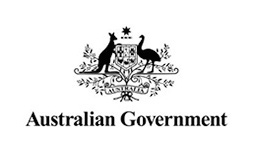Bringing cell biology to order

As a trained physicist Katharina Gaus—the deputy director of the Imaging Centre of Excellence and head of its University of New South Wales (UNSW) node—makes a very good biologist.
Kat is professor and NHMRC Senior Research Fellow in the Faculty of Medicine at UNSW, and was the driving force behind establishing the University’s Biomedical Imaging Facility. She has been collaborating with the renowned German manufacturer of optical systems, Carl Zeiss AG in developing a super-resolution fluorescence microscope, which can image a single molecule in a living cell. That’s one way in which she brings her physics to biology, but there’s much more to it than that.
She now heads a laboratory in which physicists and biologists interact on a daily basis. They are interested in solving questions to do with the membrane structure, signalling and interaction. In particular, Kat is investigating how T cells, the workhorses of the immune system, make decisions which ultimately affect our health and well-being.
Although she always interested in biology “at the level of zoology and botany, it was way too messy for me. There were too many details.” So at secondary school and as an undergraduate in Germany, Kat studied mathematics and physics. “I liked the clarity and logic. That really appealed to me.”
Then she took time out from her studies at the University of Heidelberg to study at Cambridge in the UK, and found a way to apply her physics rigour to biology—through biotechnology. She ended up doing her PhD in biotechnology at Cambridge studying the interactions between cellular receptor and the molecules or ligands that bind to them. She developed an instrument, now called Biacore, which measures the affinity between receptors and the molecular sequences or ligands that bind to them. It is still commercially available, and used in laboratories around the world.
In 2001, she came to work at the Heart Research Institute in Sydney as a fully-fledged cell biologist. Since 2002, Kat has been at the Centre for Vascular Research at UNSW, and since 2008 her work has been increasingly centred around the super-resolution fluorescence microscope. “It is a game-changing technology,” she says, that allows researchers to observe the interactions of molecules in a living cell.
Before its advent, images at the molecular level called for technologies such as electron microscopy which demand killing, staining and embedding cells. Light microscopy, which can be undertaken on living cells, hits a barrier at about 250 nanometres (millionths of a millimetre), about the same dimension as the wavelength of light. At that distance, two points are no longer distinguishable from each other.
Super-resolution works around this barrier, for example by attaching fluorescent tags to individual molecules that flicker on and off. By taking a series of about 20,000 images of the same cell, and merging it into one, a picture of the cell can be constructed molecule by molecule. These images can also reveal the interaction and activity of molecules within the cell.
At present, Kat is working on how T cells make decisions on actions such as moving, secreting the signalling compounds known as cytokines or committing suicide. It is all encoded, she says, in the patterns of molecular interactions in the cell—how they interact, when they interact and for how long. She suggests that, like computers, the behaviour of T cells is based on set of logical rules—algorithms, if you like—and that the whole spectrum can start to be unravelled by observing the activity of one molecule involved in one process.
The members of her group have already begun to move along that path by studying how cell signalling begins. They have been observing the behaviour of the T cell protein Lck which initiates signalling. Lck exists in two states, open and closed. They found that in the open state Lck clusters together, and leaves the cluster when closed. So Lck yo-yos in and out of clusters and Kat predicts that the probability of initiating signalling increases with the rate of yo-yoing.
The emergence of such a probability relationship at the heart of a key biological activity like decision-making in the immune system brings together physics and biology in a very real manner.


